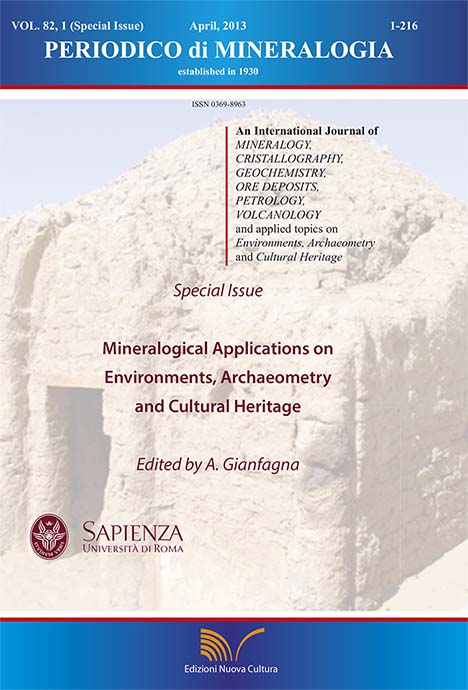A comprehensive approach to the investigation of atmospheric particulate PM2.5: preliminary results
DOI:
https://doi.org/10.2451/2013PM0012Keywords:
PM2.5, particulate matter characterization, heavy metals leaching, multi-method approach, Rome urban areaAbstract
Understanding the health effects induced in humans by the inhalation of air particulate matter requires first that airborne particles be characterized in detail. Aiming at elucidating some prominent mechanisms and processes involved in the atmospheric environment - human organism interaction, a comprehensive approach was adopted to thoroughly investigate PM2.5 from a mineralogical, chemical and chemical-physical point of view. In the present study, two summer and winter samplings collected from the Rome urban area were investigated by different techniques (SEM-EDS, XRD, ICP-MS, ICP-OES, TGA-DTA). Mineralogical and physical characterization gave important information on the prevalent phases (oxides, sulphates, silicates, carbonates, and abundant carbonaceous particles hosting metals) contained into the material under study. The bulk chemical composition evidenced the presence of heavy metals, in particular As, Cd, Cu, Cr, Fe, Pb, Ni, and Zn. Consequently, in order to verify the potential mobility of such heavy metals, batch kinetic leaching tests were carried out by using a physiological solution mimicking the lung environment and samples were collected from the solution at different times of treatment. Among the metals contained into the particulate, a leaching trend was observed mainly for Pb, Cd and Cu, with Cd resulting the most mobile metal, whereas no Fe release was observed. The leaching solution mimicking the human intrapulmonary fluid will be exploited for future toxicological tests in cellular models, in order to assess the potentially harmful role of the above metals in biological systems.


